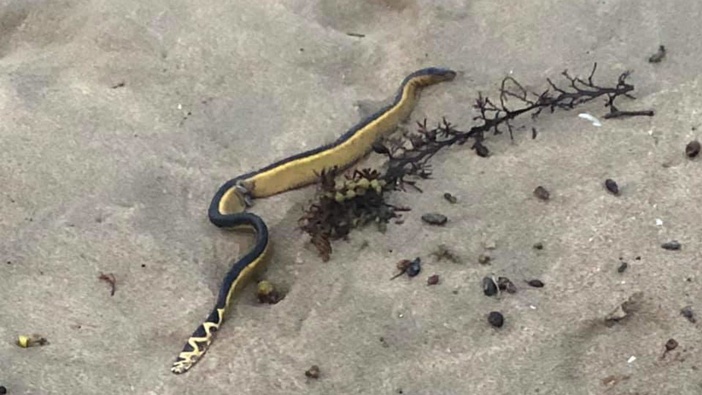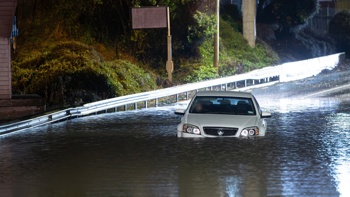Follow
the podcast on

A second deadly sea snake has been found "alive and wriggling" at a Northland beach less than 10 days since the first discovery in three years made national headlines.
Gareth Fielder found a highly venomous yellow-bellied sea snake at Woolleys Bay, on the Tutukaka Coast, over the weekend.
More than a week ago, Kaitaia resident Samantha Cooper encountered the same type of snake – classed as a native - on Tokerau Beach in Doubtless Bay.
It was the first time a yellow-bellied sea snake had been found since April 2018 at Baylys Beach, near Dargaville.
Sightings of the snakes, believed to breed in the tropical waters of the northern Tasman Sea, are fairly rare in New Zealand - only six to 10 are found a year.
Department of Conservation expert Clinton Duffy said the snake spotted ashore was usually in trouble as they spend their entire life at sea.
People should not approach or handle the sea snakes as their toxin is highly dangerous.
Duffy said no anti-venom is available in the country to treat sea snake bites.
Anti-venom is expensive and has a short shelf-life. No one has yet been bitten.
"Don't pick them up. Give them a wide berth. It takes a lot to provoke a yellow-bellied to bite, but if it does, it could well be deadly so it's best to stay away and call 0800 DOCHOT as they are the responsibility of the Department of Conservation," Duffy said.
A yellow-bellied sea snake's powerful neurotoxin – delivered by small fangs in the back of its mouth – means their main source of food, fish, can evade an initial attack but will die shortly afterwards.
The sea snake is a biosecurity risk, although it is deemed native under the Wildlife Act 1953 – as it made its way here under its own steam.
Duffy said DoC would most likely cordon off the area around a found snake because they were not allowed to pick them up either – only qualified snake handlers were able to, and DoC employed none.
Yellow-bellied sea snakes are carried to New Zealand waters on warm currents from Australia and the Pacific Islands. New Zealand waters are too cold for the snake to breed – which involves birthing live young, rather than eggs.
Take your Radio, Podcasts and Music with you









